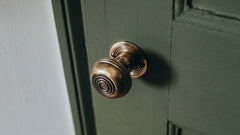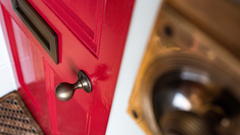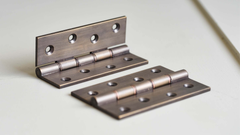Making The Most of Solar Lights

If you’re looking to add some gorgeous lighting to your garden but don’t want to increase your electricity bill or worry about running mains cables outside, solar lights are a great option.
This summer at Willow & Stone HQ, we’re loving using our range of decorative solar lighting to add some flair to our outdoor spaces. Not only do they look beautiful as dusk falls, they’re also a great choice for sustainability as they harness the renewable (and free!) energy of the sun to charge their batteries.

As solar lights don’t rely on a consistent source of power, you may find that their performance varies (particularly for those of us living in the UK where our gardens may not get as much sun as we would like!). Although unfortunately we can’t increase the amount of sun rays beaming down on your property, we can recommend the below tips to ensure you get the best performance and lifespan out of your solar lights:
Position
The performance of solar lights will vary depending on how many hours of direct sunlight the solar panel receives (ideally, this should be between 6-8 hours per day). Ensure the solar panel is facing the direction of the sun, and avoid placing your lights near trees, walls or rooftops that might cast shade as the sun moves.
Some lights in our range, such as the Fennel Stake Light and Solar Dandelion, are equipped with a built-in sensor that will activate the lights at dusk and turn them off at dawn. Try not to place these lights too close to bright artificial lights (such as street lights or porch lights), as these can confuse the sensor and put a strain on your batteries.
Batteries
Although you may be itching to use your solar lights right away, batteries will need to be fully charged by the sun before the first use, so ensure the solar panel has had a full day in direct sunlight before you try the lights out at night.
Although they’re a much more sustainable option than traditional batteries, rechargeable batteries only have so many charge cycles in them, and will need to be replaced after approximately 2 years.
Cleaning Solar Panels
Dirt and debris can build up on the surface of solar panels and reduce the amount of light they take in, so keep your panels clean by wiping regularly with a slightly damp cloth.
Storage
Although there’s no reason not to use your solar lights outside as the evenings shorten and weather gets chilly, we recommend bringing your lights inside during snow or freezing temperatures, as this can reduce battery performance as well as affect the longevity of the lights themselves.
If you choose to bring your solar lights inside during the winter months, remove batteries prior to storing and be sure to store at room temperature in a dry space.
For more delicate solar lights such as our range of solar lanterns, we recommend storing inside overnight and during particularly windy spells (although the durable material is both weatherproof and tearproof).
Season
Solar lights will perform best during the Spring and Summer months (perfect for summer garden parties!). While your lights will still work in the Autumn and Winter months, you may notice that the illumination is dimmer and only lasts for 1-2 hours.
With proper care your solar lights will be shining brightly throughout the summer. If you’re looking to add a glow to your garden this season, you can browse our full range of solar lights here.










